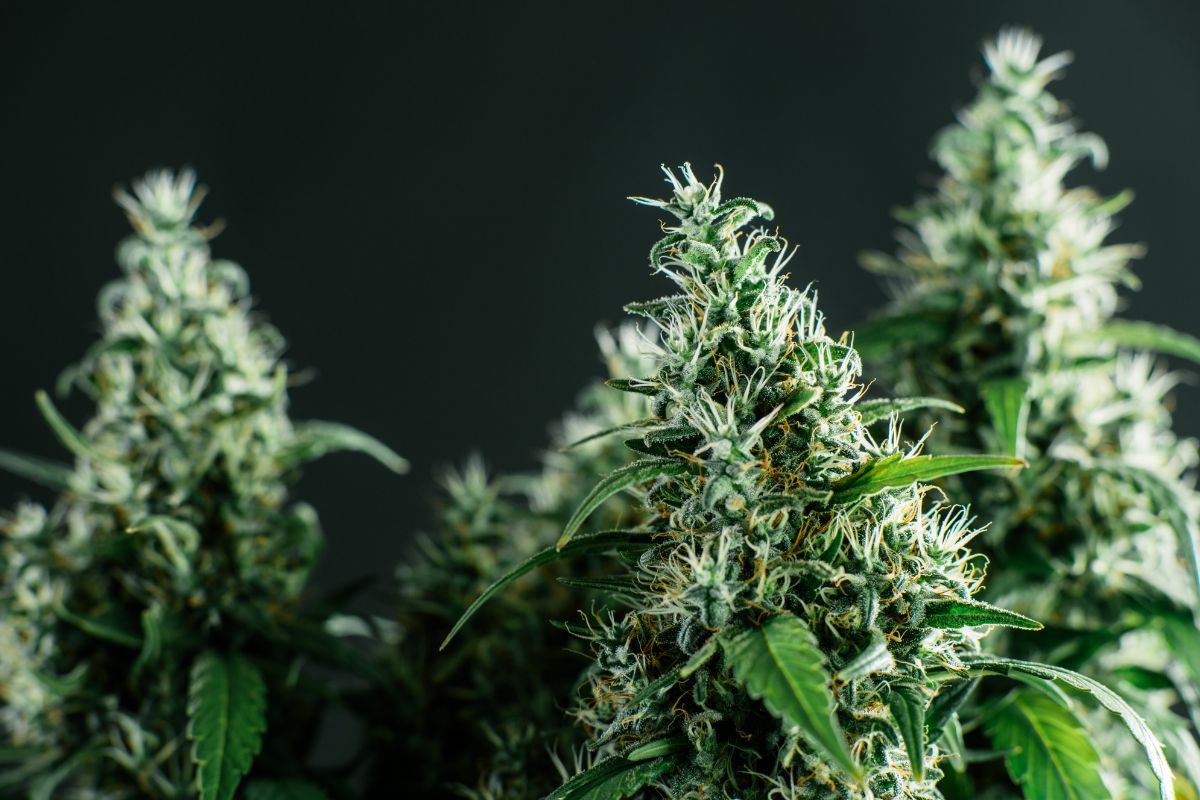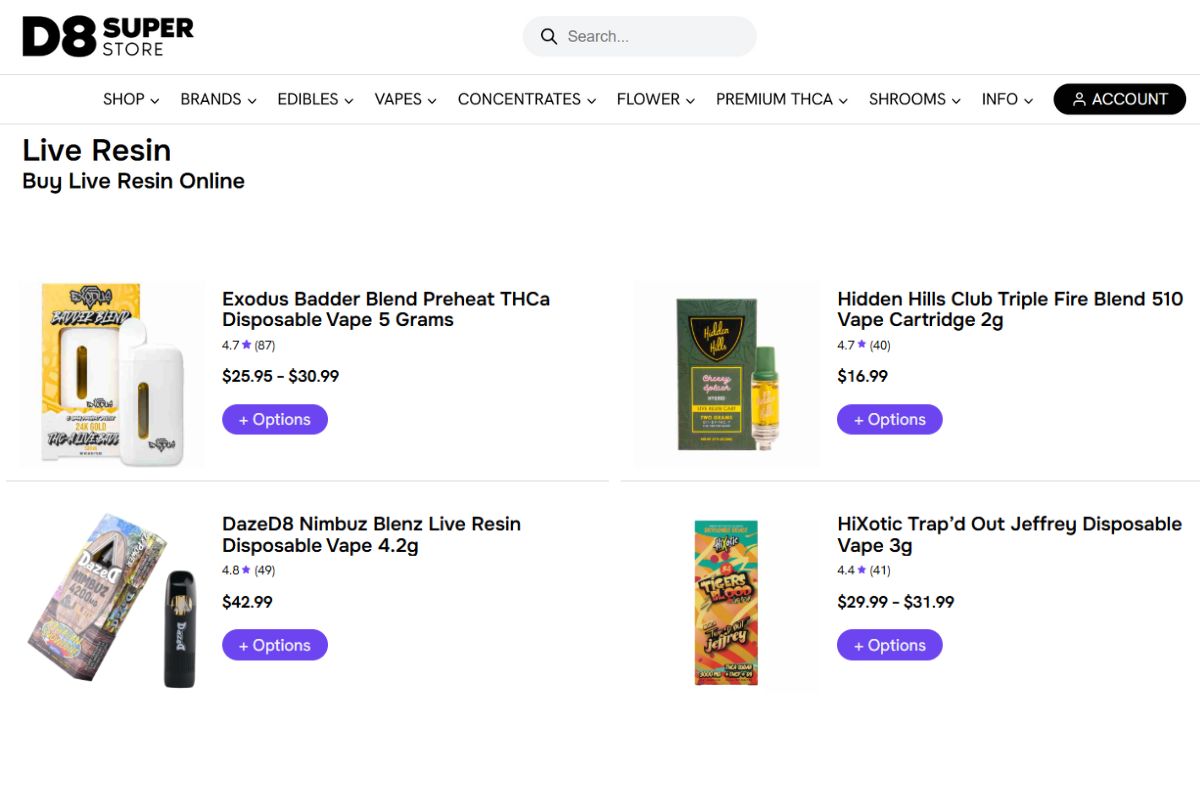What is TAC in Weed? Essential Insights on Total Active Cannabinoids
Understanding Cannabinoids
What are Cannabinoids?
Cannabinoids are chemical compounds found in the cannabis plant that include both psychoactive and non psychoactive variants, which teract with the body’s endocannabinoid system, influencing the psychoactive experience .
They have various effects on the human body, including psychoactive and therapeutic effects, showcasing their true potential .
- Understanding Cannabinoids
- Cannabinoid Profile: All the Cannabinoids
- What is TAC?
- Cannabis Labels and Product Selection
- The Endocannabinoid System and Entourage Effect
- High TAC Products and Live Resin
- Legal Status and Considerations
- Conclusion
- FAQ: Total Active Cannabinoids (TAC)
- What is the difference between TAC and THC?
- Is a higher TAC always better?
- Can you find TAC on all cannabis product labels?
- How do I calculate TAC myself?
- Is TAC important for medical marijuana?
- Do all high-TAC products get you high?
- Is TAC the same in edibles?
- How can I find high-TAC products?
- Is TAC more important than terpene content?
- Can TAC change over time?
Cannabinoids, including tetrahydrocannabinol, are a diverse group of compounds, with over 100 identified in the cannabis plant. Understanding cannabinoids is essential for making informed decisions about cannabis products.
Types of Cannabinoids

Cannabinoids can be divided into major and minor types, including non psychoactive variant . THC and CBD are the most well-known cannabinoids, but there are many other cannabinoids that contribute to the effects of cannabis.
Minor cannabinoids include CBG, CBN, CBC, and THCV. Each cannabinoid has unique effects and potential health benefits.
Role of Cannabinoids in Health
Cannabinoids can influence appetite, mood, sleep, and pain perception, which may be beneficial for those with sleep disorders. They may help manage chronic conditions such as epilepsy and anxiety.
Research on cannabinoids continues to reveal new therapeutic applications, including potential antibacterial properties. Understanding the role of cannabinoids can help users tailor their cannabis use.
Cannabinoid Profile: All the Cannabinoids
What is a Cannabinoid Profile?
A cannabinoid profile includes all the active cannabinoids present in a cannabis product to help achieve desired effects. This profile can help predict the effects of a cannabis product.
It includes THC, CBD, and other minor cannabinoids. Knowing the full profile, including thc and cbd, helps users choose the right product.
Medical Benefits of Cannabinoid Profiles
Cannabinoid profiles are useful for medical marijuana patients. They can help tailor treatment plans for various conditions. Patients can look for specific cannabinoids linked to symptom relief. Cannabinoid profiles contribute to precision cannabis therapy, especially when considering tac vs thc.
Cannabinoid Profile vs. TAC
TAC includes the full cannabinoid profile, measured in percentages. Cannabinoid profiles provide detailed information, while TAC gives a summary. Both are essential for understanding a product’s effects. Users benefit from considering both when selecting cannabis products.
What is TAC?
| Cannabinoid | Best Known Effect | Details |
|---|---|---|
| THC | Euphoria / Psychoactive High | Provides the “high” feeling, boosts mood, may increase appetite. |
| THCA | Anti-inflammatory / Neuroprotective | Non-psychoactive; may help with arthritis, nausea, and brain health. |
| CBD | Anxiety & Stress Relief | Non-psychoactive; calms the nervous system, reduces anxiety & inflammation. |
| CBDA | Anti-nausea / Anti-inflammatory | Strong potential in reducing nausea and inflammation. |
| CBG | Focus / Mood Support | Non-intoxicating; may improve concentration, reduce pain and inflammation. |
| CBN | Sedation / Sleep Aid | Mildly psychoactive; often used in products for better sleep. |
| CBC | Mood Boosting / Pain Relief | May increase “bliss molecule” (anandamide); fights pain and inflammation. |
Definition and Calculation
TAC stands for Total Active Cannabinoids, which refers to the total amount of active cannabinoids present in a cannabis product. TAC is calculated by summing up the percentages of all the active cannabinoids present in a product.
TAC provides a comprehensive overview of a cannabis product’s potency and potential therapeutic benefits. Understanding TAC is essential for making informed decisions about cannabis products.
TAC vs. THC Content
THC is a single cannabinoid, while TAC includes all active cannabinoids. A product may have low THC but high TAC due to other cannabinoids. THC content informs about psychoactivity, TAC informs about overall potency. Understanding the difference helps consumers make better choices.
Importance of TAC in Cannabis Products
TAC is a crucial factor in determining the potency and potential therapeutic benefits of a cannabis product. A higher TAC indicates a more potent product, which may be more effective for certain medical conditions.
TAC can help consumers understand the overall strength and potential therapeutic benefits of a cannabis product. TAC is an important consideration for medical marijuana patients seeking specific therapeutic benefits, particularly those looking for high thc produc .
Cannabis Labels and Product Selection

Understanding Cannabis Labels
Cannabis labels typically include information on cannabinoid content, terpene profile, strain information, and testing information. Understanding cannabis labels is essential for making informed decisions about marijuana use and cannabis products.
THC percentage and TAC are important factors to consider when selecting a cannabis product. Cannabis labels can help consumers understand the potential effects and therapeutic benefits of a product.
Key Differences in Cannabis Labels
THC percentage and TAC are key differences in cannabis labels. THC percentage refers to the amount of THC present in a product, while TAC refers to the total amount of active cannabinoids.
Understanding the difference between THC and TAC is essential for making informed decisions about cannabis products. Cannabis labels can help consumers understand the potential effects and therapeutic benefits of a product.
Choosing the Right Product Based on Labels
Labels can indicate whether a product is better for day or nighttime use. Medical users may prefer high-CBD or balanced THC/CBD products.
Labels also show testing results for safety and consistency. Reading labels thoroughly can help avoid unwanted effects.
The Endocannabinoid System and Entourage Effect
| Cannabinoid | Interaction with ECS | Entourage Effect Role |
|---|---|---|
| THC | Binds directly to CB1 receptors (brain & CNS) | Main psychoactive driver; enhances effects of other cannabinoids & terpenes |
| THCA | Weak interaction (non-psychoactive until heated) | May reduce inflammation, modulates THC’s intensity |
| CBD | Modulates CB1 & CB2 receptors indirectly | Balances THC, reduces anxiety, supports immune system |
| CBDA | Weak ECS interaction; may block COX-2 enzymes | Enhances anti-nausea and anti-inflammatory effects |
| CBG | Binds to CB1 & CB2 (weakly); stimulates anandamide | Boosts mood, supports THC/CBD effects |
| CBN | Binds weakly to CB receptors | Enhances sedation, works with THC for better sleep |
| CBC | Weak ECS binding; increases anandamide levels | Boosts mood, complements CBD’s pain relief |
How Cannabinoids Interact with the Body
Cannabinoids, including thc, interact with the body’s endocannabinoid system, which regulates various physiological processes. THC interacts with the body’s endocannabinoid system by binding to CB1 receptors in the brain, while other cannabinoids may interact differently .
Other cannabinoids, such as CBD, can interact with the body’s endocannabinoid system in different ways. Understanding how cannabinoids and their combined effects interact with the body is essential for understanding their potential therapeutic benefits.
The Entourage Effect: How Cannabinoids Work Together
The entourage effect refers to the interaction between different cannabinoids and terpenes. The entourage effect can strengthen, moderate, or alter the effects of individual cannabinoids.
CBD may counteract some of the potential side effects of THC. The entourage effect is a complex phenomenon that is still not fully understood.
Maximizing Benefits Through the Entourage Effect
Full-spectrum products aim to capture the entourage effect, often including cannabigerolic acid. They include multiple cannabinoids and terpenes for synergistic benefits, often in high thc formulation .
Broad-spectrum and isolate products may lack the full entourage effect. Users seeking therapeutic benefits often prefer full-spectrum products.
High TAC Products and Live Resin
What is Live Resin?
Live resin is a type of cannabis concentrate that is made from fresh, uncured cannabis plants. Live resin is known for its high TAC and potent psychoactive effects.
Live resin is a popular choice among cannabis enthusiasts seeking a strong and flavorful product. Understanding live resin is essential for making informed decisions about cannabis products.
Characteristics of High TAC Products
High TAC products often include concentrates like wax, shatter, and resin. They deliver intense effects and faster onset times.
Medical users may choose high TAC products for severe symptoms. These products require careful dosing due to their strength.
Benefits of High TAC Products
High TAC products can provide potent psychoactive effects and therapeutic benefits, within the current legal landscape. High TAC products can be more effective for certain medical conditions, such as chronic pain and anxiety.
High TAC products can provide a more intense and longer-lasting experience. Understanding the benefits of high TAC products is essential for making informed decisions about cannabis products.
Legal Status and Considerations
| State | Medical Use | Recreational Use | Notes |
|---|---|---|---|
| Alabama | ✅ Yes | ❌ No | Medical cannabis legalized; recreational use remains illegal. |
| Alaska | ✅ Yes | ✅ Yes | Both medical and recreational cannabis are legal. |
| Arizona | ✅ Yes | ✅ Yes | Legal for both medical and recreational use. |
| Arkansas | ✅ Yes | ❌ No | Medical use permitted; recreational use remains illegal. |
| California | ✅ Yes | ✅ Yes | Fully legalized; however, certain hemp-derived cannabinoids face restrictions. |
| Colorado | ✅ Yes | ✅ Yes | One of the first states to legalize both medical and recreational cannabis. |
| Connecticut | ✅ Yes | ✅ Yes | Legal for both uses; sales commenced in 2022. |
| Delaware | ✅ Yes | ✅ Yes | Recreational use legalized in 2023. |
| Florida | ✅ Yes | ❌ No | Medical cannabis legal; recreational use remains illegal. |
| Georgia | ✅ Limited | ❌ No | Low-THC oil permitted for specific medical conditions; recreational use illegal. |
| Hawaii | ✅ Yes | ❌ No | Medical use legal; recreational use under consideration. |
| Idaho | ❌ No | ❌ No | All forms of cannabis remain illegal. |
| Illinois | ✅ Yes | ✅ Yes | Legal for both medical and recreational use. |
| Indiana | ✅ Limited | ❌ No | CBD oil permitted; other forms remain illegal. |
| Iowa | ✅ Limited | ❌ No | Limited medical use permitted; recreational use illegal. |
| Kansas | ❌ No | ❌ No | All forms of cannabis remain illegal. |
| Kentucky | ✅ Limited | ❌ No | Low-THC products permitted; broader legalization under discussion. |
| Louisiana | ✅ Yes | ❌ No | Medical cannabis legal; recreational use remains illegal. |
| Maine | ✅ Yes | ✅ Yes | Legal for both medical and recreational use. |
| Maryland | ✅ Yes | ✅ Yes | Recreational use legalized in 2023. |
| Massachusetts | ✅ Yes | ✅ Yes | Fully legalized for both uses. |
| Michigan | ✅ Yes | ✅ Yes | Legal for both medical and recreational use. |
| Minnesota | ✅ Yes | ✅ Yes | Recreational use legalized in 2023. |
| Mississippi | ✅ Yes | ❌ No | Medical cannabis legalized in 2022; recreational use remains illegal. |
| Missouri | ✅ Yes | ✅ Yes | Recreational use legalized in 2022. |
| Montana | ✅ Yes | ✅ Yes | Legal for both medical and recreational use. |
| Nebraska | ❌ No | ❌ No | All forms of cannabis remain illegal. |
| Nevada | ✅ Yes | ✅ Yes | Legal for both uses; regulated market in place. |
| New Hampshire | ✅ Yes | ❌ No | Medical use legal; recreational use under legislative review. |
| New Jersey | ✅ Yes | ✅ Yes | Recreational sales commenced in 2022. |
| New Mexico | ✅ Yes | ✅ Yes | Legal for both medical and recreational use. |
| New York | ✅ Yes | ✅ Yes | Recreational sales began in 2023. |
| North Carolina | ✅ Limited | ❌ No | CBD oil permitted; other forms remain illegal. |
| North Dakota | ✅ Yes | ❌ No | Medical use legal; recreational use remains illegal. |
| Ohio | ✅ Yes | ✅ Yes | Recreational use legalized in 2023. |
| Oklahoma | ✅ Yes | ❌ No | Medical cannabis legal; recreational use remains illegal. |
| Oregon | ✅ Yes | ✅ Yes | Fully legalized; robust regulatory framework in place. |
| Pennsylvania | ✅ Yes | ❌ No | Medical use legal; recreational use under consideration. |
| Rhode Island | ✅ Yes | ✅ Yes | Recreational use legalized in 2022. |
| South Carolina | ❌ No | ❌ No | All forms of cannabis remain illegal. |
| South Dakota | ✅ Yes | ❌ No | Medical use legal; recreational use remains illegal. |
| Tennessee | ✅ Limited | ❌ No | Low-THC products permitted; broader legalization under discussion. |
| Texas | ✅ Limited | ❌ No | CBD and low-THC products permitted; recreational use remains illegal. |
| Utah | ✅ Yes | ❌ No | Medical cannabis legal; recreational use remains illegal. |
| Vermont | ✅ Yes | ✅ Yes | Legal for both medical and recreational use. |
| Virginia | ✅ Yes | ✅ Yes | Recreational use legalized in 2021; sales commenced in 2024. |
| Washington | ✅ Yes | ✅ Yes | One of the first states to legalize both uses. |
| West Virginia | ✅ Yes | ❌ No | Medical cannabis legal; recreational use remains illegal. |
| Wisconsin | ✅ Limited | ❌ No | CBD oil permitted; other forms remain illegal. |
| Wyoming | ❌ No | ❌ No | All forms of cannabis remain illegal. |
Legal Status of Cannabis Products
The legal status of cannabis products varies by state and country. THC percentage and TAC are important factors to consider when determining the legal status of a cannabis product, especially in discussions about tac and thc .
Understanding the legal status of cannabis products is essential for making informed decisions about cannabis products, and TAC serves as a comprehensive measure . Cannabis products can be classified as medical or recreational, depending on their THC percentage and TAC.
Buying Cannabis Products Legally
Legal dispensaries offer lab-tested, regulated products. Illegal markets may not provide accurate TAC or THC labeling. Medical patients should consult with licensed professionals. Stay informed on local laws and updates to cannabis legislation.
Conclusion
Final Thoughts on TAC and Cannabis Use
TAC is a key metric for understanding cannabis potency and effects, contributing to a broader picture of product evaluation . It provides a full picture beyond just THC content. Considering TAC, cannabinoid profile, and product type leads to smarter choices. Whether for recreational or medical use, understanding TAC can enhance your experience when consuming marijuana.
FAQ: Total Active Cannabinoids (TAC)
What is the difference between TAC and THC?
THC is one cannabinoid, while TAC measures all active cannabinoids.
Is a higher TAC always better?
Not necessarily. A higher TAC can mean stronger effects, but it depends on your goals and tolerance.
Can you find TAC on all cannabis product labels?
Most regulated cannabis markets require TAC or detailed cannabinoid content on labels.
How do I calculate TAC myself?
Add up the percentages of all listed active compounds, including cannabinoids like THC, CBD, CBG, etc.
Is TAC important for medical marijuana?
Yes, TAC helps medical users determine the potential strength and therapeutic effect of a product.
Do all high-TAC products get you high?
No. High-CBD products can have high TAC without psychoactive effects.
Is TAC the same in edibles?
TAC applies to edibles too, though effects differ due to digestion and metabolism.
How can I find high-TAC products?
Look for lab results or product descriptions, including answers to what is tac in weed, at licensed dispensaries.
Is TAC more important than terpene content?
Both are important. TAC affects potency; terpenes influence flavor and effects.
Can TAC change over time?
Yes. Cannabinoids can degrade, especially if not stored properly, and may also be affected by residual solvents .









